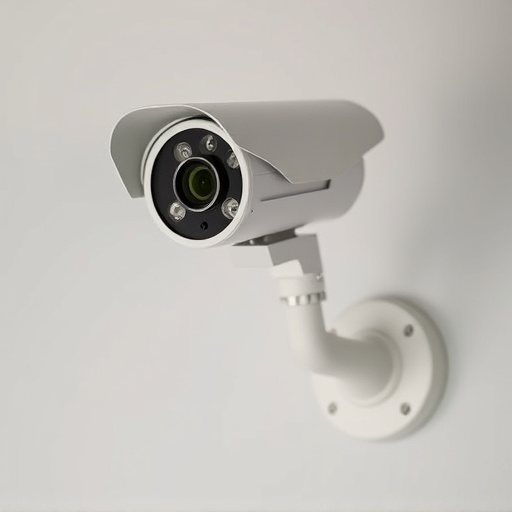Battery-operated fake security cameras, or realistic dummy cameras, offer a cost-effective, no-installation alternative to traditional security systems. They come in various lifelike shapes and can deter intruders in homes, businesses, and public spaces. When choosing a shape, consider deployment environment and lighting conditions; weatherproof designs for outdoor use and context-appropriate size match visual credibility. Strategic placement is key: clear lines of sight, eye-level positioning, and discreet locations are optimal. Legal and ethical considerations include local privacy laws and avoiding deception; transparency builds trust. The right Realistic Dummy Camera Shape Choice ensures authenticity while enhancing security.
“Discover the power of battery-operated fake security cameras as a smart, cost-effective solution for home or business security. This comprehensive guide explores their multifaceted benefits and realistic dummy camera shape choices. Learn how these innovative devices can deter criminal activity while offering adjustable installation options to suit any environment. We’ll also delve into legal considerations and ethical use guidelines related to this popular security enhancement, emphasizing the importance of responsible deployment. Enhance your security with the right choice in realistic dummy cameras.”
- Understanding Battery-Operated Fake Security Cameras: Their Purpose and Benefits
- Realistic Dummy Camera Shape Choice: Factors to Consider
- Installation and Placement Tips for Effective Deterrence
- Legal Considerations and Ethical Use of Fake Security Cameras
Understanding Battery-Operated Fake Security Cameras: Their Purpose and Benefits
Battery-operated fake security cameras, also known as realistic dummy cameras, are designed to deter potential intruders while offering a cost-effective alternative to traditional security systems. These innovative devices mimic the appearance and functionality of real security cameras, but with a twist—they don’t require an external power source or complex installation. The primary purpose is to create the illusion of enhanced security in homes, businesses, or public spaces, often as a deterrent measure.
The benefits are numerous; these cameras can be easily placed in strategic locations, providing a sense of vigilance without the need for expensive infrastructure. Their realistic dummy camera shape choices, ranging from subtle and unassuming to highly detailed and lifelike, ensure they blend seamlessly into their surroundings. This versatility makes them ideal for various scenarios, from deterring burglars in residential areas to securing high-traffic commercial spaces.
Realistic Dummy Camera Shape Choice: Factors to Consider
When selecting a realistic dummy camera shape, several factors come into play. One key consideration is the environment where the camera will be placed. For instance, if it’s meant for outdoor use, choose a design that can withstand varying weather conditions and offer a convincing appearance even from a distance. The size and detail level of the camera should align with its intended setting; a miniature fake cam might blend better in a residential area, while larger models could deter potential intruders more effectively in commercial spaces.
Additionally, consider the lighting conditions. Some replicas are designed to mimic real cameras’ lens reflectivity and movement under different lights, making them harder to detect. The level of realism also depends on the viewer’s perspective; up close, subtle details like a lenticular surface or intricate circuit patterns can give the game away, but from a distance, these intricacies might not be noticeable. Thus, balancing the camera’s appearance across various viewing distances is crucial for an authentic look.
Installation and Placement Tips for Effective Deterrence
When installing battery-operated fake security cameras, strategic placement is key for maximizing deterrence. Opt for areas with clear lines of sight, such as entry points, windows, and open spaces, where would-be intruders are most likely to approach. The realistic dummy camera shape choice is essential; select models that closely resemble genuine security cameras to maintain authenticity and effectiveness.
Ensure the cameras are mounted at eye level or slightly elevated to capture clear footage of potential threats. Discreetly place them in plain sight, avoiding obvious locations like directly behind visible objects or too close to lighting fixtures, which could cast shadows that distort images. Regularly change battery and positioning to maintain their effectiveness as deterrents.
Legal Considerations and Ethical Use of Fake Security Cameras
The legal landscape surrounding battery-operated fake security cameras is complex and varies across jurisdictions. While some regions may have strict regulations against deceptive surveillance devices, others offer more nuanced guidance. Users must carefully consider local laws to avoid potential penalties. For instance, many areas require explicit notification when recording video, especially in public spaces or places with high privacy expectations, like homes.
Ethical implications also demand attention when deploying these devices. The realistic dummy camera shape choice should be made with care to avoid misleading individuals into thinking they are genuine security cameras. Responsible use involves placing them strategically for legitimate security purposes rather than as a means of invasion or manipulation. Transparency about the presence of fake cameras can foster trust and respect, ensuring that neighbors and visitors understand the true nature of the surveillance system.
Battery-operated fake security cameras offer a creative and cost-effective way to enhance home or business security. When choosing a realistic dummy camera, consider factors like design, size, and lighting effects to ensure maximum deterrence. Proper installation and strategic placement are key to making these devices an effective security tool. Remember to use them ethically and comply with local laws, balancing the benefits of enhanced safety with privacy considerations.
